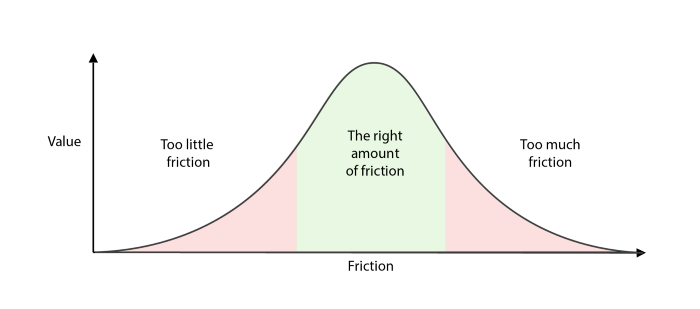Member-only story
We need more friction in our algorithms
Companies have paid lip service to our digital wellbeing for too long. Now we need to see real change.

In an insightful talk by Steve Selzer, the designer and creative director paints a picture of how our “frictionless” world has long been dictated by Silicon Valley startups. In particular, the dominant formula for apps is to make them as brainlessly easy to use as possible. Need a taxi? Hail it with a button. Craving a burger? There’s a button for that too. Want someone to clean your bachelor pad? Button!
Realistically, none of these apps need to be that simple. But unfortunately, startups took the standard of using technology to make our lives easier and ran with it (right off a cliff). And as users, we’ve simply come to accept this as the norm. What’s even more upsetting is that the usability of these apps is totally divorced from how much happiness we get out of them. Despite shining a light on this depressing reality, there was one graph from Selzer’s talk that caught my attention.

This friction graph, credited to Jesse Weaver, suggests that for an experience to be “valuable,” it actually requires a certain amount of friction. Selzer, who was formerly a design manager at Airbnb, explains how the company actually improved user satisfaction by making certain things on the app more difficult. For example, users were surprisingly happier when forced to reach out to their host rather than contact Airbnb for help. Plus, Airbnb got to cut costs on their customer support. A win-win!
Yet, this example is barely a blip on the radar of disasters caused by frictionless design. It took the rampant spread of anti-vaccination and anti-masking conspiracies on WhatsApp during the pandemic for the messaging app to finally place limits on its easy-forwarding feature. As is too often the case though, it was too little, too late.
Instagram tried to create some friction in 2018 when they tried to reduce users’ screen time as part of a larger digital well-being movement across the tech giants. Their idea of Friction was the ‘You’re all…








